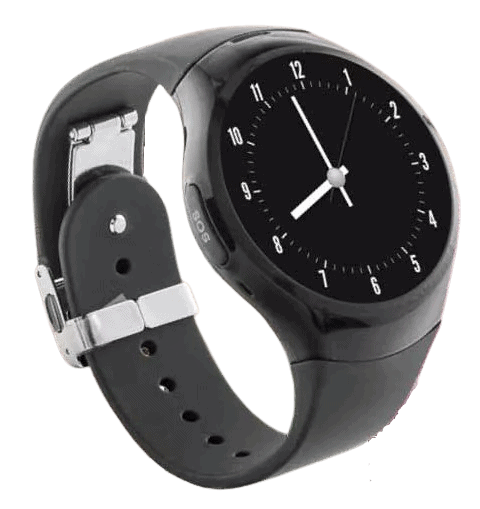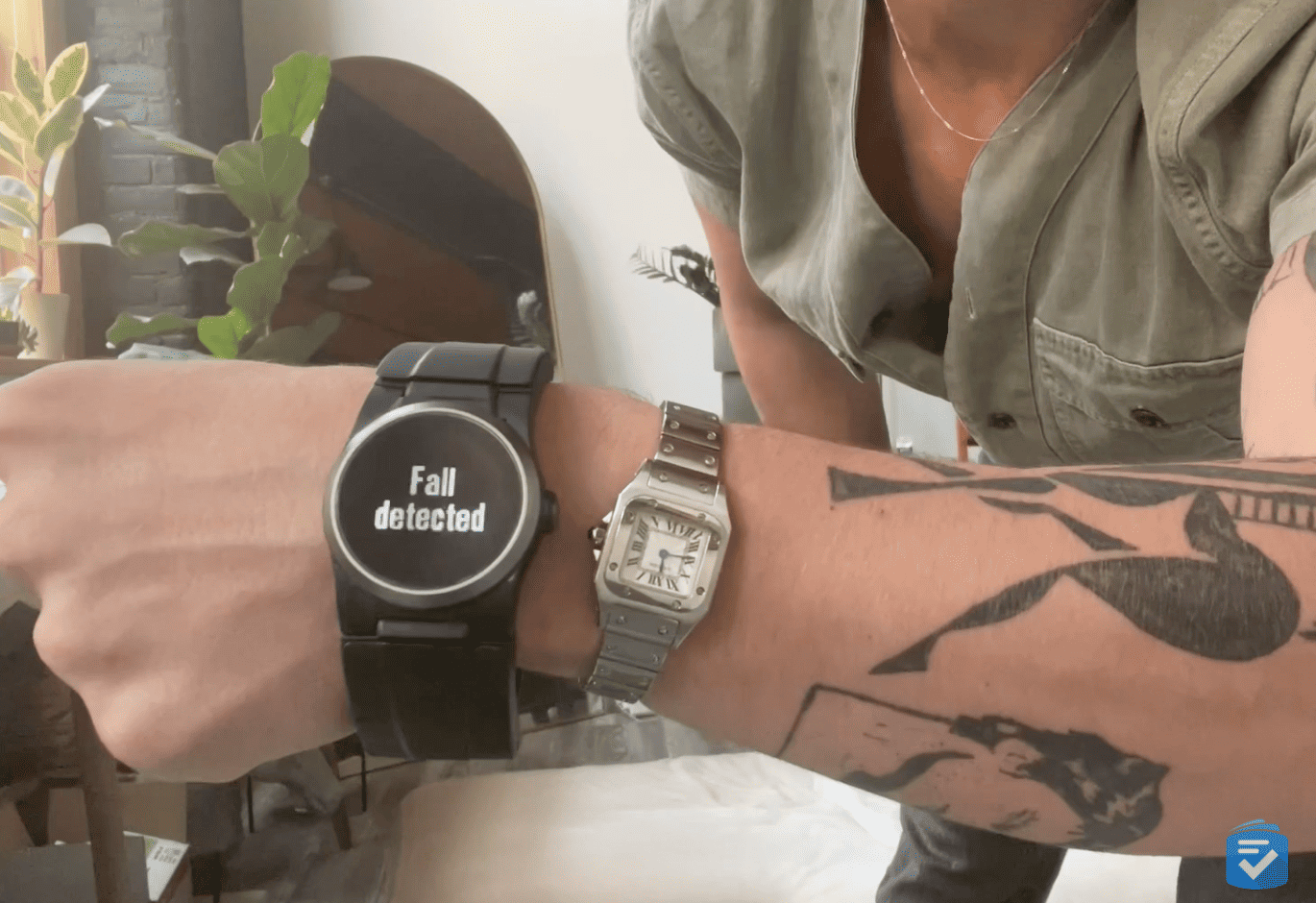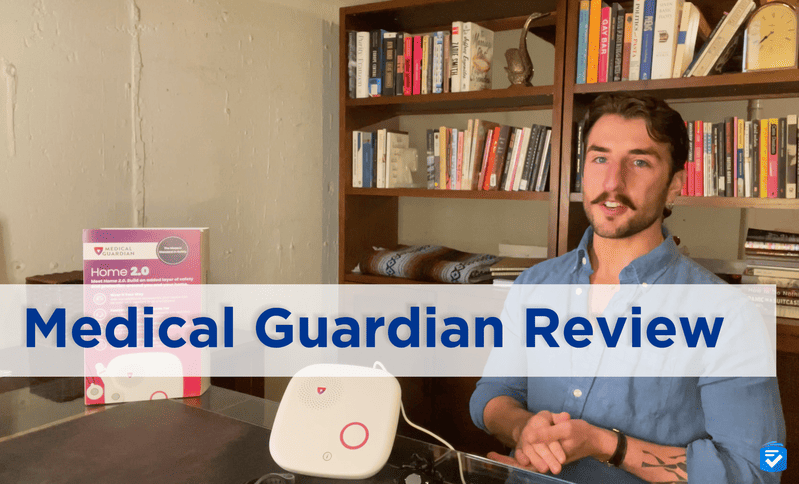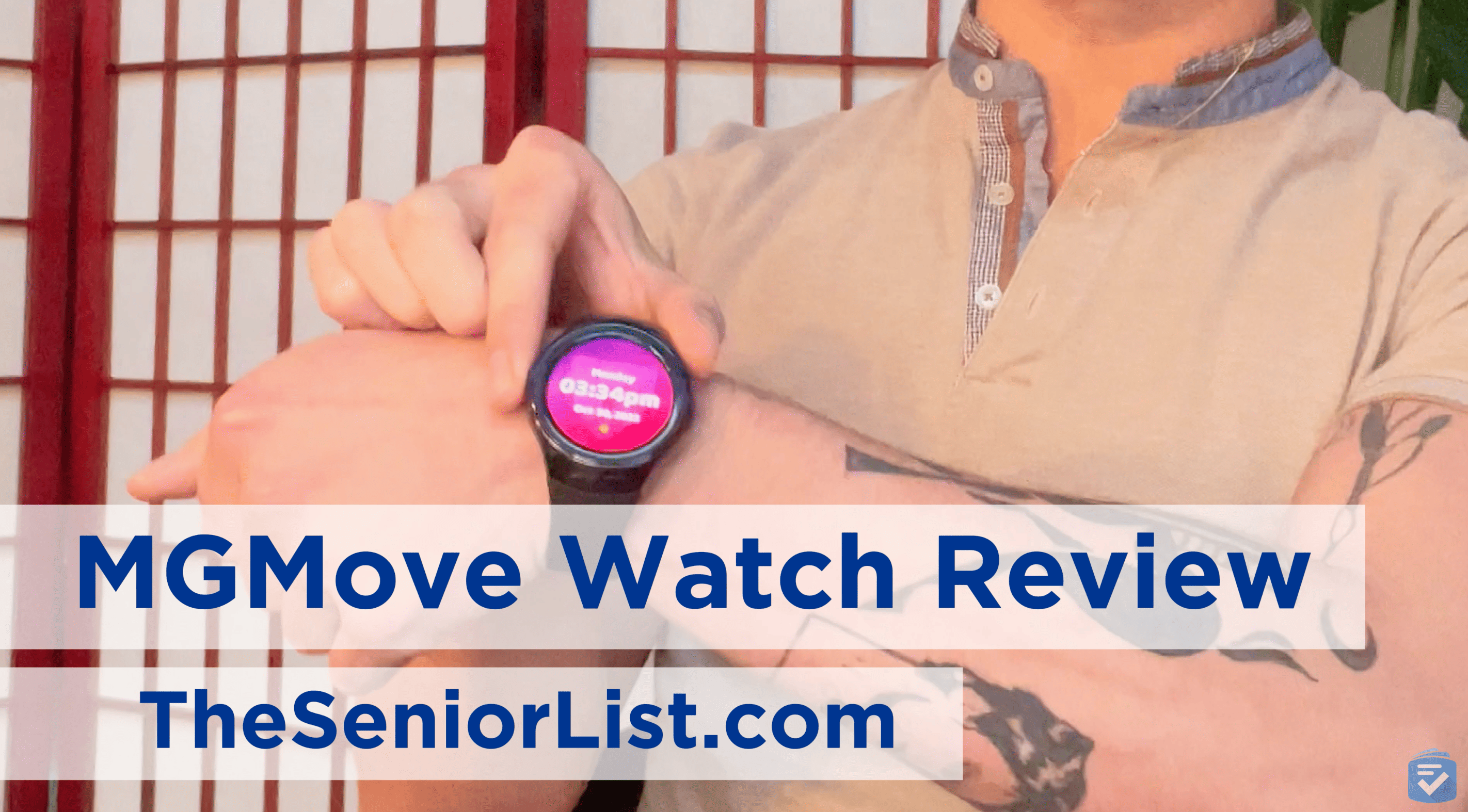
Medical Guardian MGMove Watch Review

The senior population in America is growing,1 and so is the demand for innovative ways for older adults to maintain independence while ensuring safety. Medical Guardian’s MGMove attempts to bridge this gap with a discreet smartwatch that functions as a medical alert system. According to the Centers for Disease Control’s latest fall statistics,2 more than one in four older Americans fall each year, making reliable medical alert devices an important accessory for seniors with active lifestyles.
In comprehensive tests, we examined whether the MGMove delivered on its promises of style and substance. We wore the watch around the city to test its GPS tracking capability, in the shower to test water resistance, conducted numerous fall tests, and connected with response agents to gauge their helpfulness in an emergency. Keep reading to learn about the MGMove’s functions, costs, durability, and reliability and why we recommend this stylish smartwatch with emergency alert services for older adults.
Key Findings
- The MGMove proved to be a reliable medical alert device, connecting us to help in an average of 10 seconds.
- The MGMove resembles a typical smartwatch, so it’s ideal for someone seeking a discreet wearable.
- Using the MyGuardian app, we could track the MGMove’s location as well as receive alerts when an emergency call was placed.
>> Read More: The Best Medical Alert Systems with GPS
The MGMove costs roughly $43 per month.: If you’re looking for a more affordable medical alert system, read our rundown of this year’s top-rated medical alert systems.
Why Trust Us?
Our team of caregivers, experts, and health care professionals conducted over 5,000 hours of in-depth research and testing. The results helped us recommend the most reliable brands and devices. In this process, our team:
- Tested 50 medical alert devices from 15 different brands.
- Surveyed 1,250 seniors and caregivers on medical alert system usage.
- Consulted with nurses, EMTs, and caregivers who are experts at caring for older adults.
- Published dozens of videos that demonstrate our medical alert system testing.
- Evaluated verified customer reviews of medical alert companies from the Better Business Bureau.
- Continues to monitor developments in the world of medical alert systems and updates our findings accordingly.
Our Methodology: How We Tested the MGMove
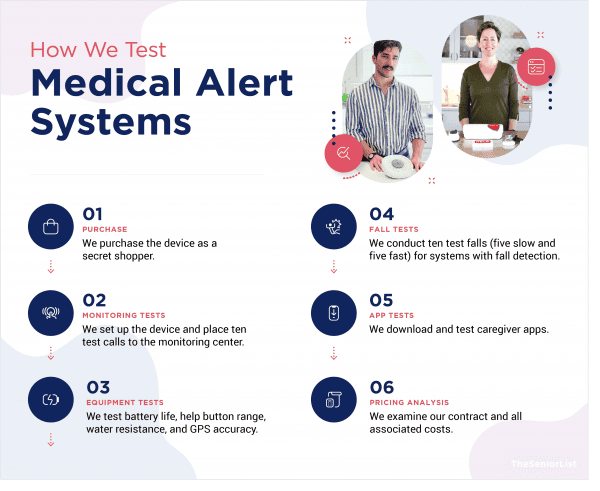
We evaluated the MGMove using the following criteria:
- Response times: We placed 10 test calls with the MGMove and calculated the average response time.
- Ease of use: We thoroughly tested each device to make sure it was easy to use, particularly for those with visual impairments and manual dexterity issues.
- Customer care: We spoke at length with Medical Guardian’s customer care teams and monitoring agents to ensure they offered adequate support.
- Affordable pricing: We examined the costs of our MGMove and compared them to similar systems from other companies.
- Flexible contracts: We read the fine print of our Medical Guardian service agreement, ensuring there were no unexpected fees or obligations.
- Extra features: Apart from conducting test calls, we also tested the MGMove’s water-resistance, speaker volume, GPS, and caregiver connectivity features.

MGMove Pros and Cons
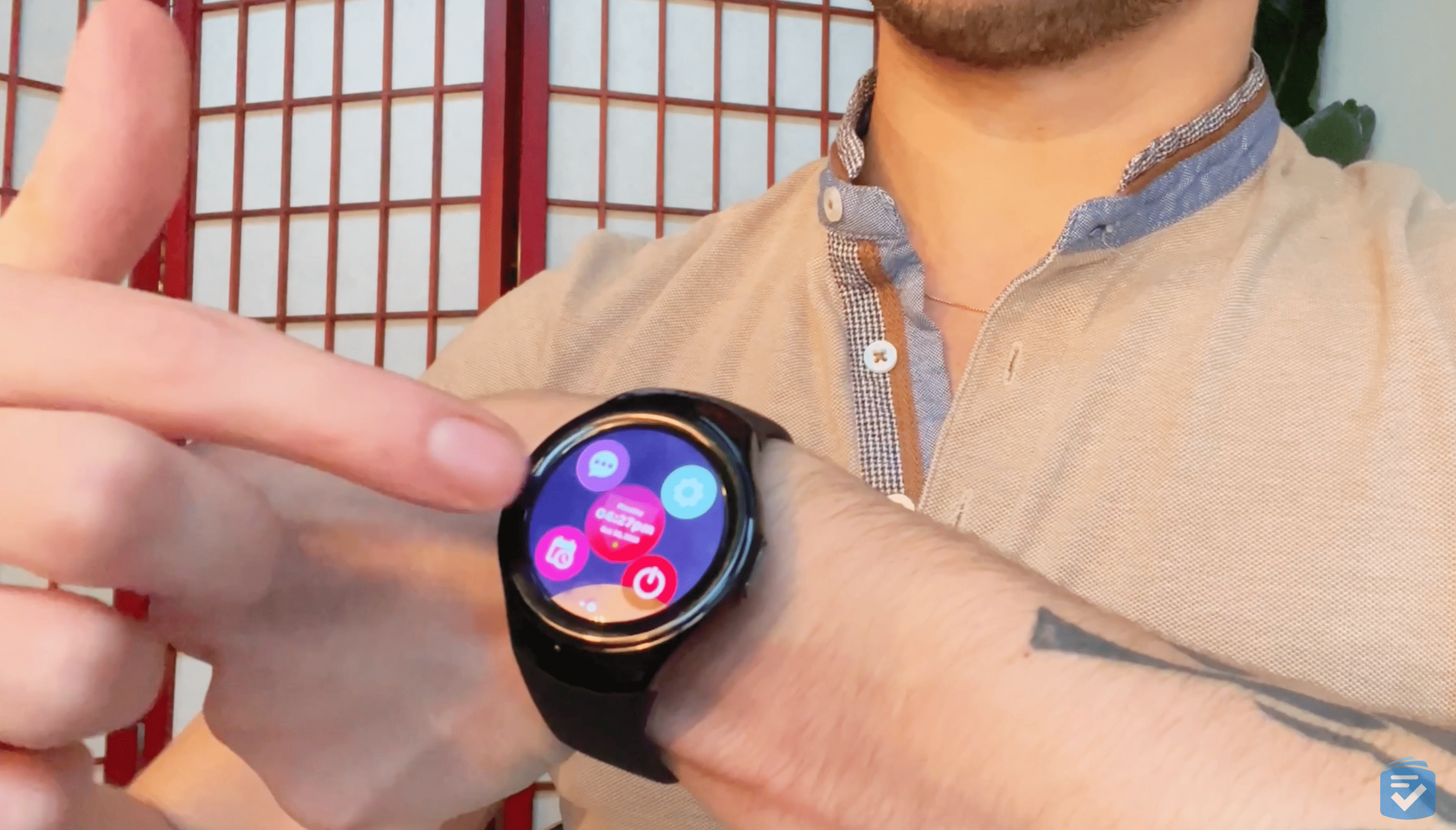
MGMove Pros
- Ultrafast response times: In our tests, the MGMove connected us to help in an average of 10 seconds. This is faster than any other watch we’ve tested.
- Discreet design: Compared to traditional medical alert bracelets, the MGMove looks like a normal digital watch. When I wore the MGMove out in public, no one paid my wrist any mind.
- Simple interface: Despite having more features than the average medical alert system, the MGMove has an intuitive menu that makes it easy to use.
- Useful caregiver features: We could also use the MGMove to send voice messages and receive reminders from caregivers.
- 20-hour battery life: In our tests, the MGMove lasted up to 20 hours on a single charge. While that’s not as long as the Kanega Watch’s battery life, it was more than enough to last through each day of testing.
>> Read More: UnaliWear Kanega Watch Review
MGMove Cons
- Needs daily charging: Unlike more basic medical alert systems that might not need charging for years, the MGMove smartwatch battery lasts less than 24 hours.
- Additional costs for extra features: If you want to use MGMove for messaging, reminders, or the MyGuardian caregiver portal, you’ll need to pay an extra $5 per month.
>> Looking for accurate fall detection? Read The Best Fall Detection Devices in 2025.
MGMove Specs
| Watch cost (one-time charge) | $199.95 |
|---|---|
| Monthly monitoring cost | $42.95 |
| Average response time | 10 seconds |
| Battery life | 20 hours |
| Water-resistant | IP67 |
| GPS | Built-in |
| Fall detection (optional add-on) | $10 per month |
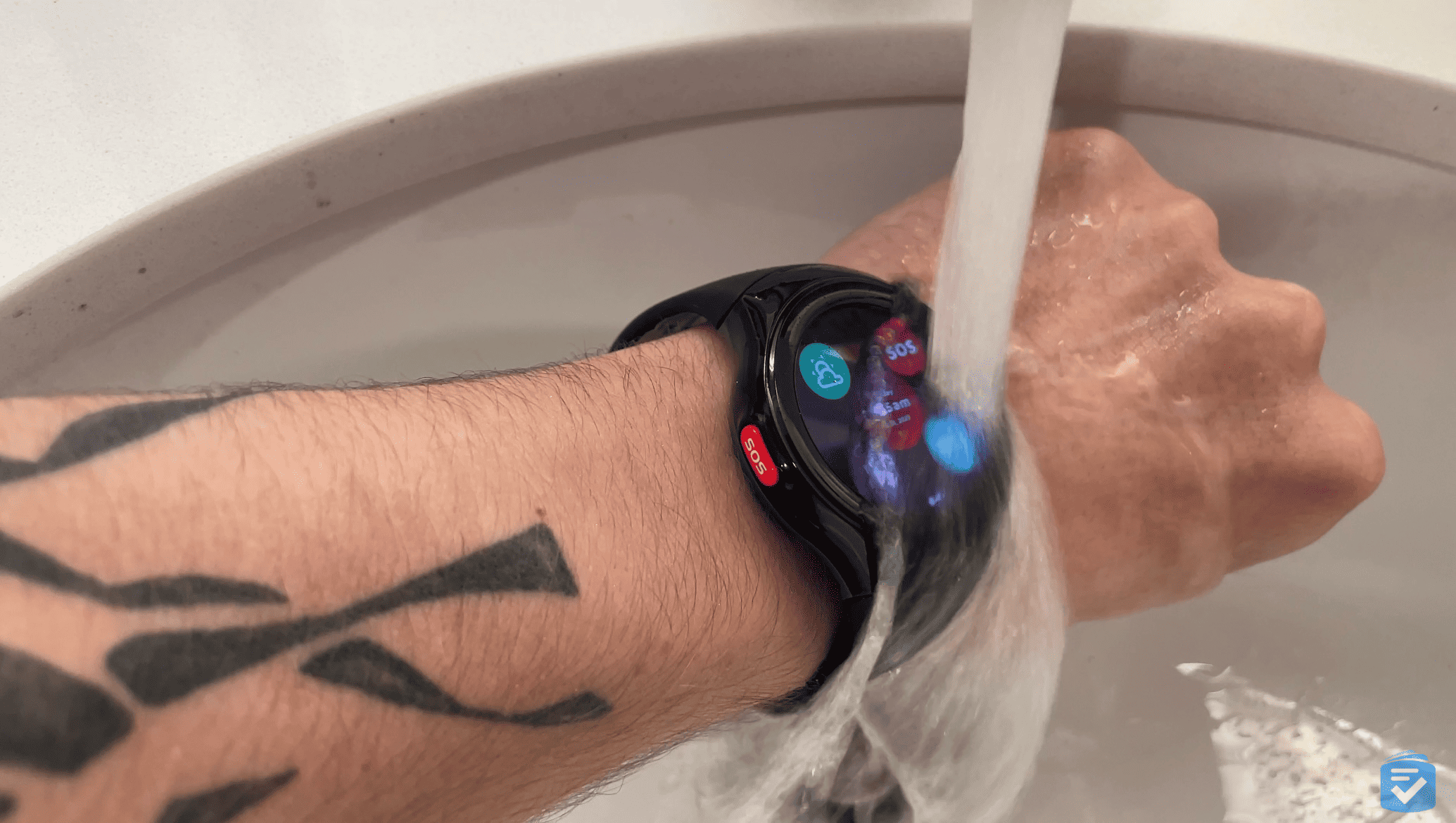
What Is the MGMove?
The MGMove is Medical Guardian’s latest medical alert watch. Unlike its predecessor, the Freedom Guardian, it has a 1.25-inch touch screen, a 4G LTE cellular connection, and more advanced caregiver features.
The MGMove’s most important feature, however, is its urgent response capability. This allows the wearer to quickly contact Medical Guardian’s monitoring center for emergency assistance. The feature is what makes it a medical alert watch rather than a simple smartwatch.
>> Learn More About: Medical Guardian Systems and Costs
MGMove Video Review
Want to see the MGMove in action? Check out our video review in which Ryan Molloy takes the device into the streets of Rhode Island.
Using My MGMove
After purchasing my MGMove watch, I received an email prompting me to set up MyGuardian, Medical Guardian’s online caregiver portal. This is where I created my list of emergency contacts. These contacts could now access the MyGuardian portal, which allowed them to send messages to my watch. They could also be contacted by Medical Guardian’s monitoring agents.
For example, if I were to place an urgent response call but didn’t need medical attention, Medical Guardian would call contacts on my “Support Circle” list. This would be useful if the user fell and needed help getting back up but not emergency medical services. Speedy access to a caregiver circle has a positive impact on older adults’ health and well-being. According to a study in The Journals of Gerontology, having a strong support network can significantly reduce hospitalization rates among older adults.3 This makes the Support Circle feature particularly valuable.
>> Read More: Does Medicare Cover Ambulances?
Unboxing and Installation
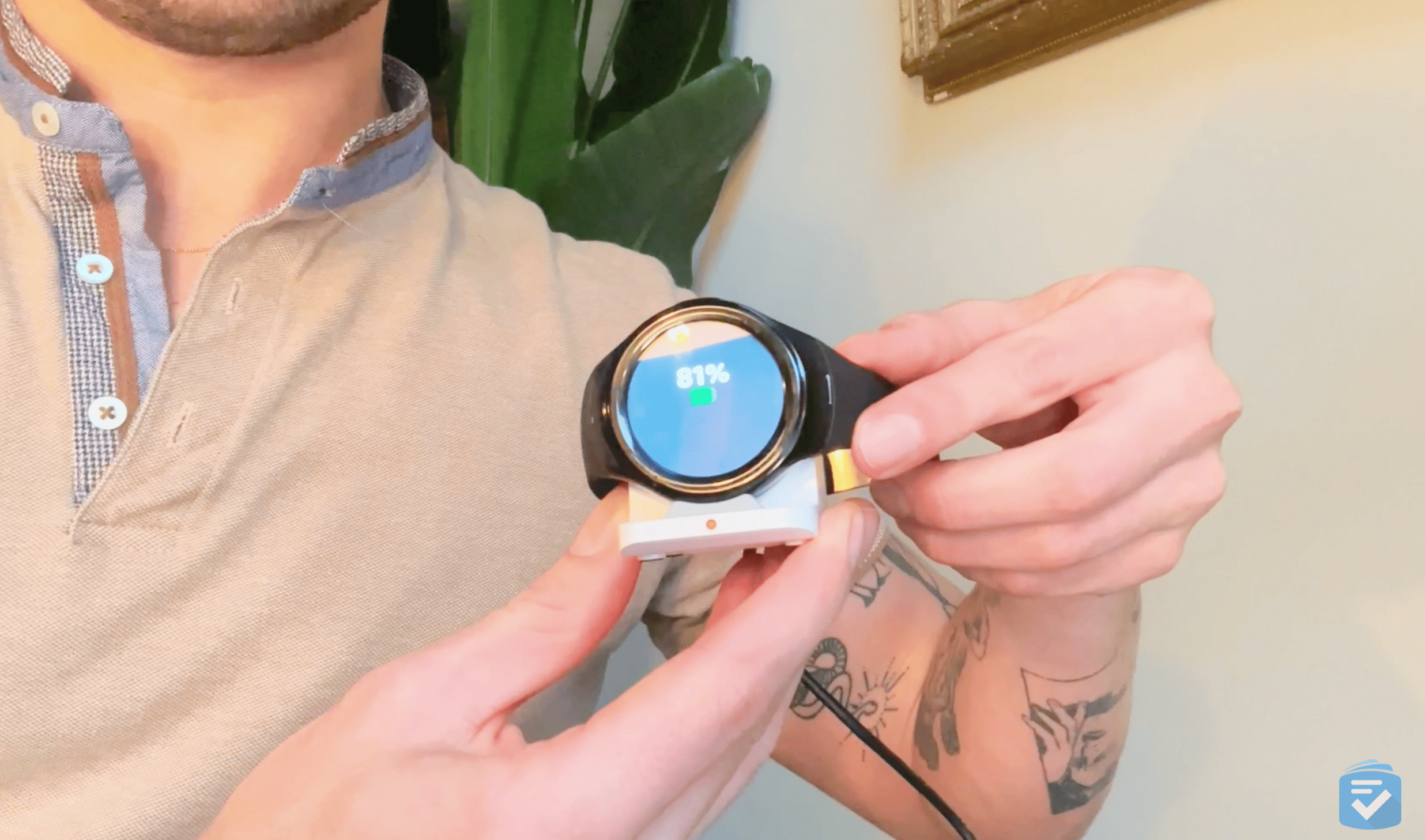
Upon receiving my MGMove, I unboxed it and found the following:
- One MGMove watch
- One magnetic charging dock
- One charging cable
- Various instruction manuals
I put my MGMove watch in the charging dock, and it announced it was charging. It took about an hour to do so, and then I began my tests.

Design
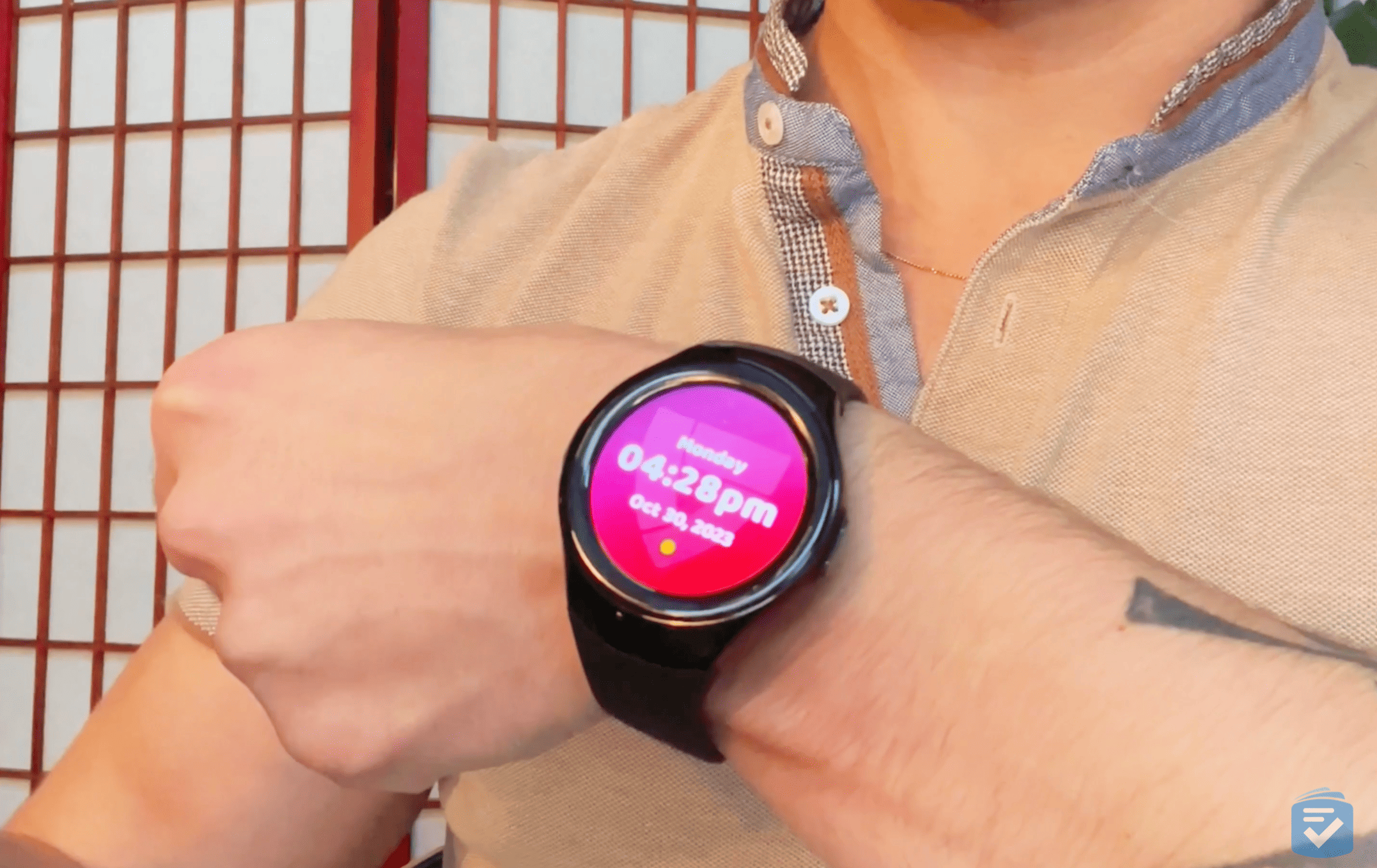
The MGMove looks pretty much like any digital smartwatch. Its discreet look might appeal to older adults who are self-conscious about wearing a more obvious medical alert device. Some older adults might prefer a discreet smartwatch to a big emergency help button, which can increase the likelihood that they’ll wear it regularly.4
>> Related: Best Medical Alert Bracelets

The MGMove’s adjustable rubber wristband opens and closes easily with a sturdy metal clasp. Although it has more features than your average medical alert watch, the 1.25-inch touch screen is simple and easy to navigate. The watch has a red dedicated Urgent Response button that connects you with the monitoring center. On its right side, you’ll find the sleep/wake button. Pressing this either opens the home screen or puts the watch to sleep.
>> Further Reading: SOS Smartwatch Review
Once you wake the watch, you can tap on the home screen to view the main menu and access the other features. While navigating between the two menus, the home screen remains in the center of the screen. Elsewhere, when I opened a feature, swiping my finger to the right brought me back to the home screen. To view the battery life and the strength of the cellular signal, I swiped downward.
Speaking of the battery, I was impressed with the MGMove’s ability to hold a charge. In my tests, the battery lasted 20 hours. I also thought it was handy that when the watch is in its charging cradle, the screen rotates while displaying the time.
Features
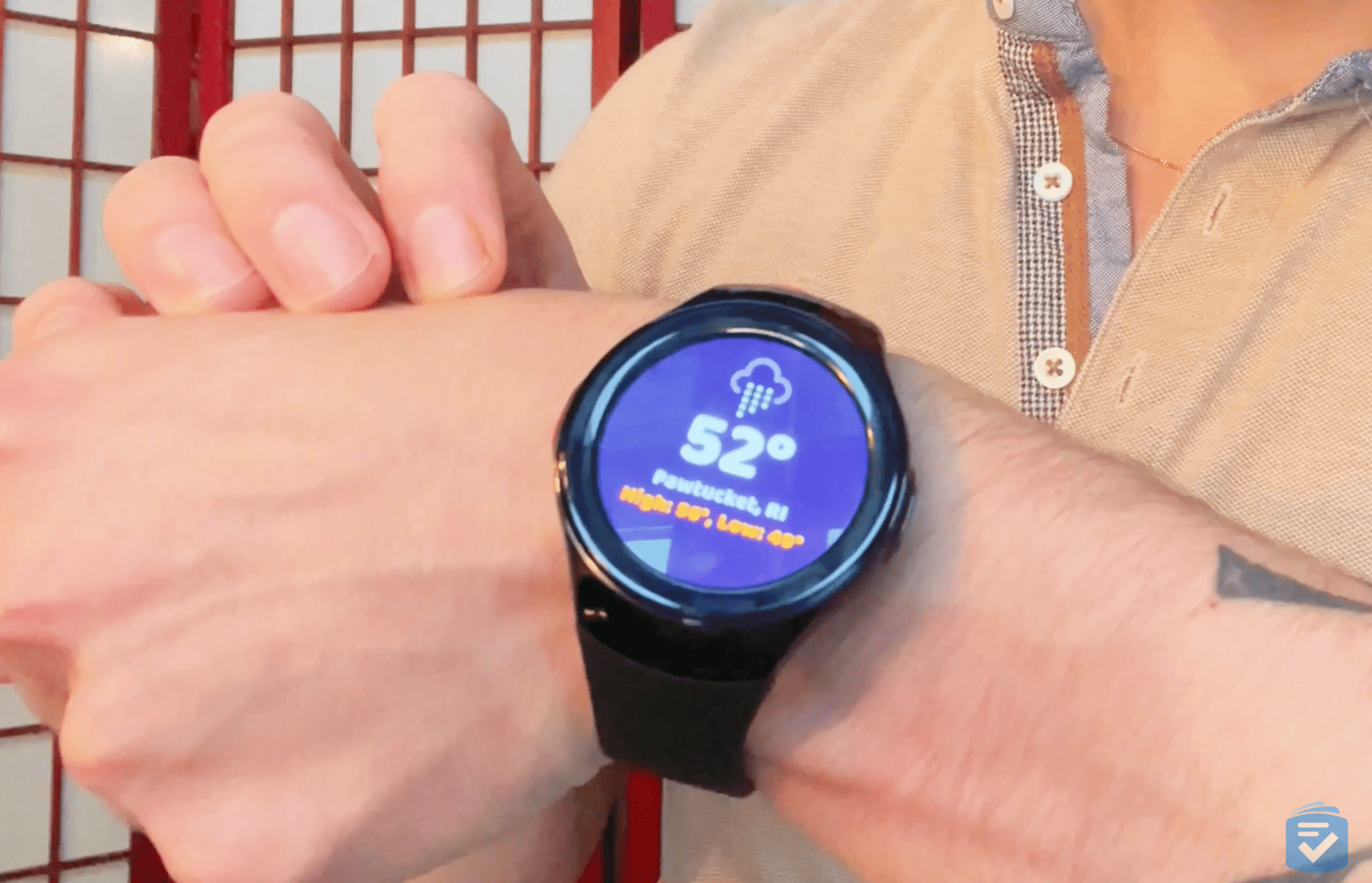
While the MGMove’s emergency response features are, in my opinion, the most important, the watch has other useful features as well, such as the weather app and the pedometer that tracks daily steps. It also allowed me to track my steps over a week and set goals for total step counts.
The test button contacts the Medical Guardian monitoring center. A successful test means you’ll hear an automated recording that verifies the device is working properly. In settings, you can adjust the MGMove watch face from digital to analog as well as turn on the “shake to wake” feature, which makes the watch light up if you shake your wrist.
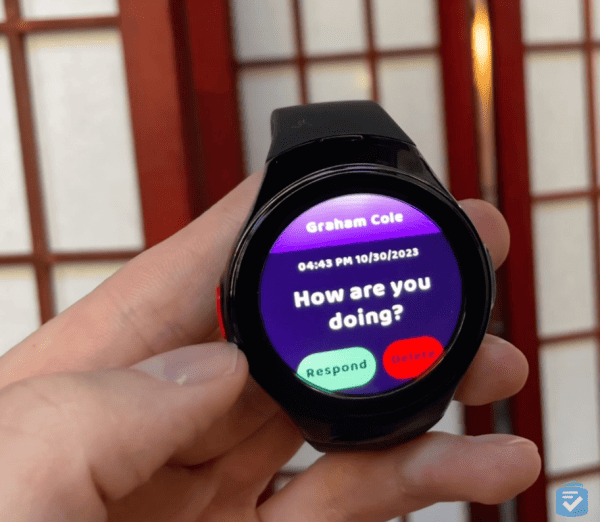
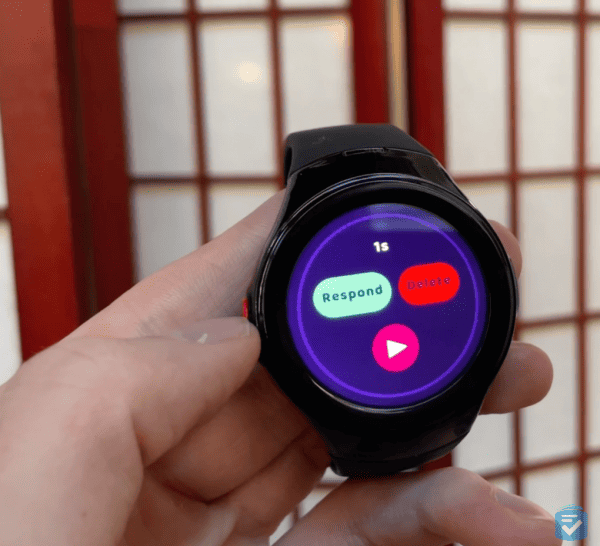
Adding caregivers to the MyGuardian app gives them access to the messaging and reminder features. When I tapped on the green checkmark, this notified my loved ones through the portal that I’d received the reminder I’d set to take my medications.
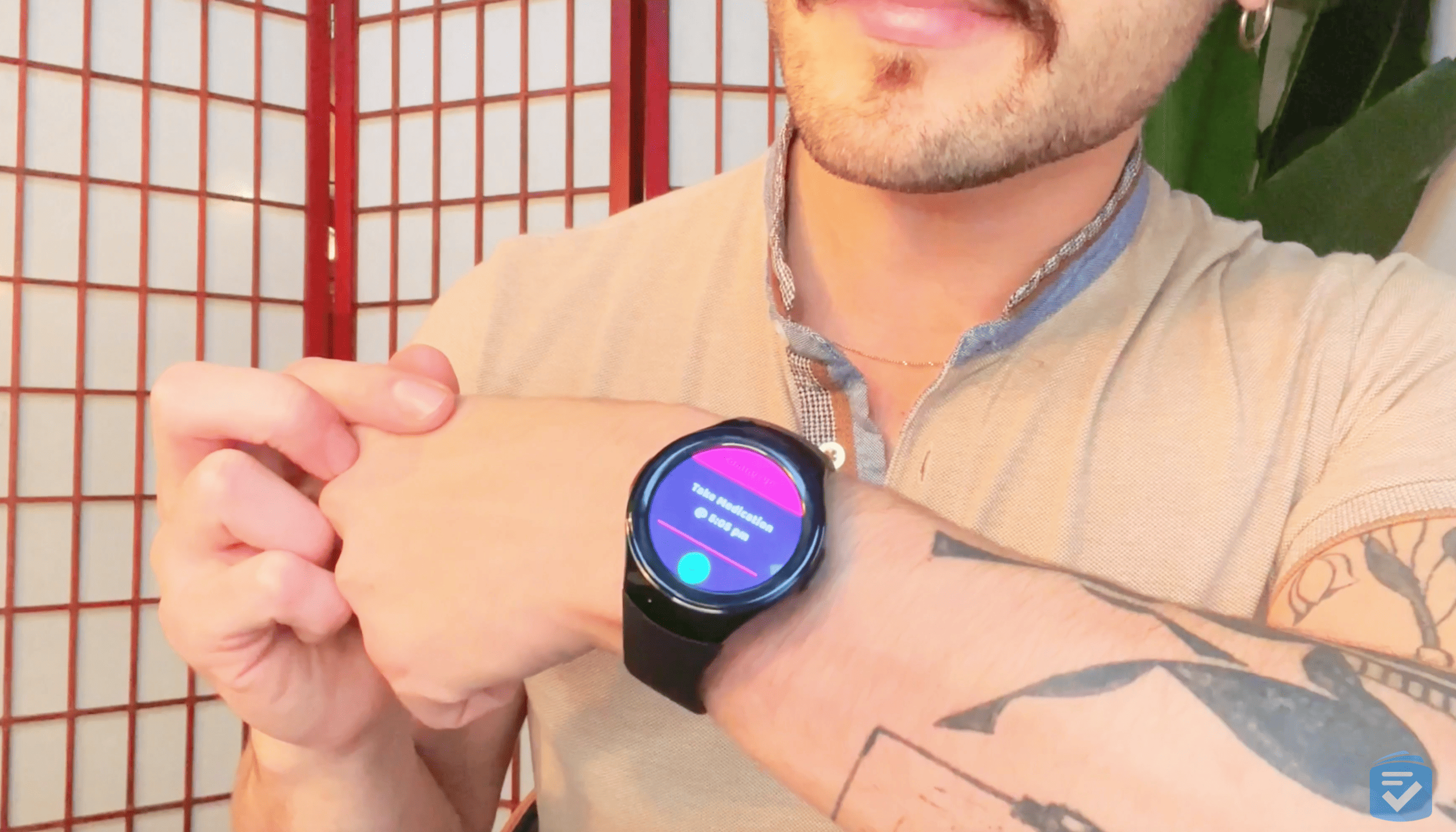
In the portal, my partner could also send messages directly to my watch. When I received his “How are you doing?” message on the watch, I could read it or have the watch read it aloud. To reply, I held down the record button, dictated my own message, and sent it back.
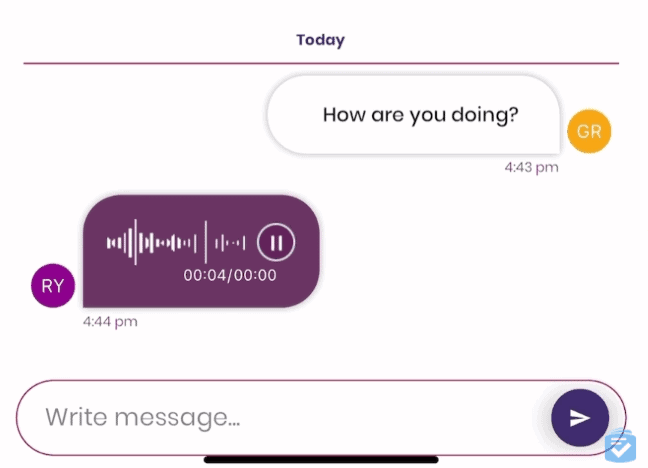
While the messaging feature was cool in theory, I found it slightly clunky to use. While older adults aren’t a homogenous group, it’s hard to imagine my grandparents going through all these steps just to read and reply to a message. This is particularly true since sending messages via a smartphone is faster and more efficient. These messaging and reminder features also cost me an extra $5 per month, bringing my monthly cost to $48.
Emergency Response Testing
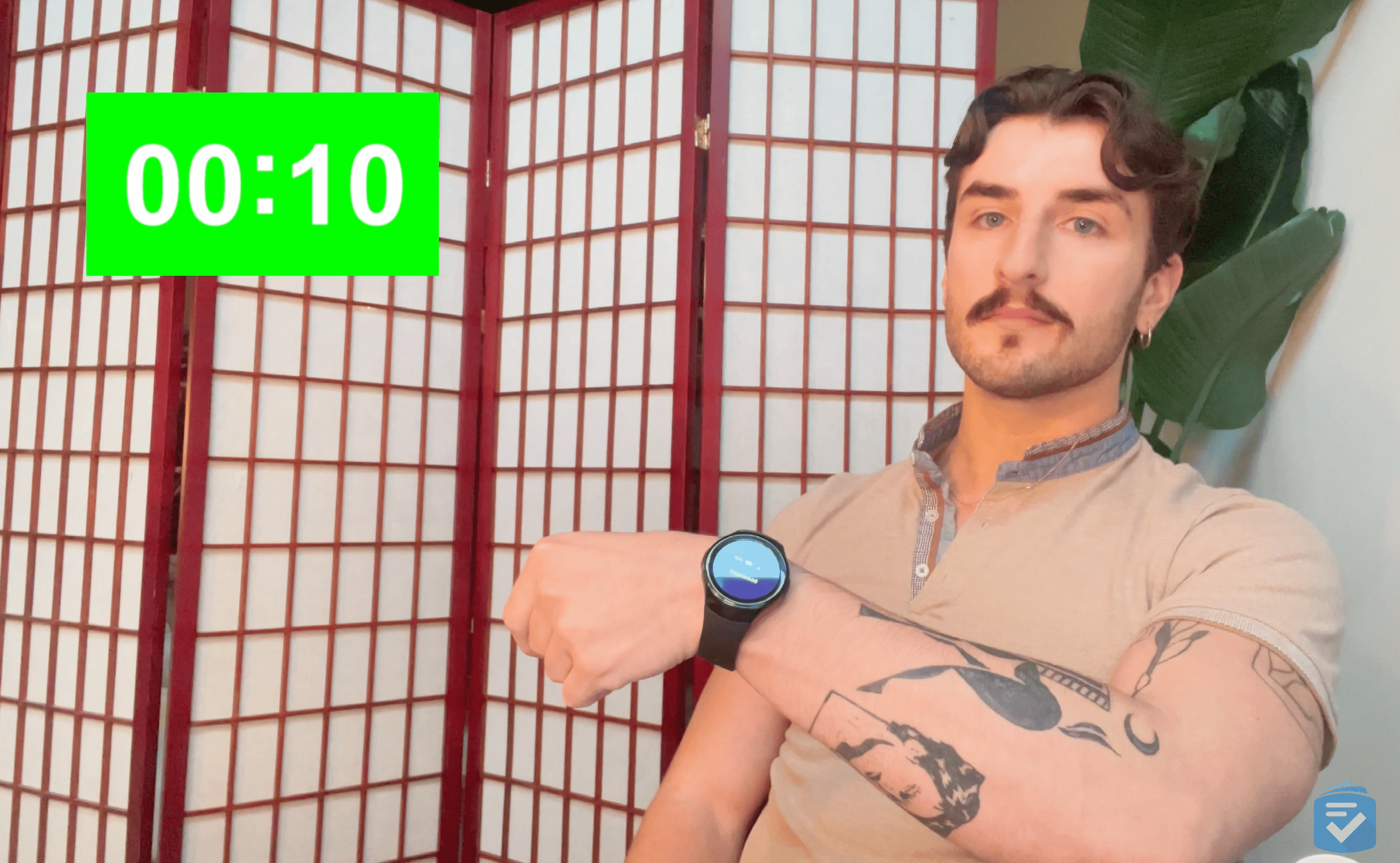
Extra features aside, the MGMove’s primary function is to contact help in the event of an emergency. It does this in two ways: You can either press and hold the dedicated button on the side of the watch or you can press the top-right button on the phone’s screen.
Whichever method you choose, you’ll press the button for five seconds. Taking your finger off the button within five seconds disarms the emergency call, which helps prevent false alarms.
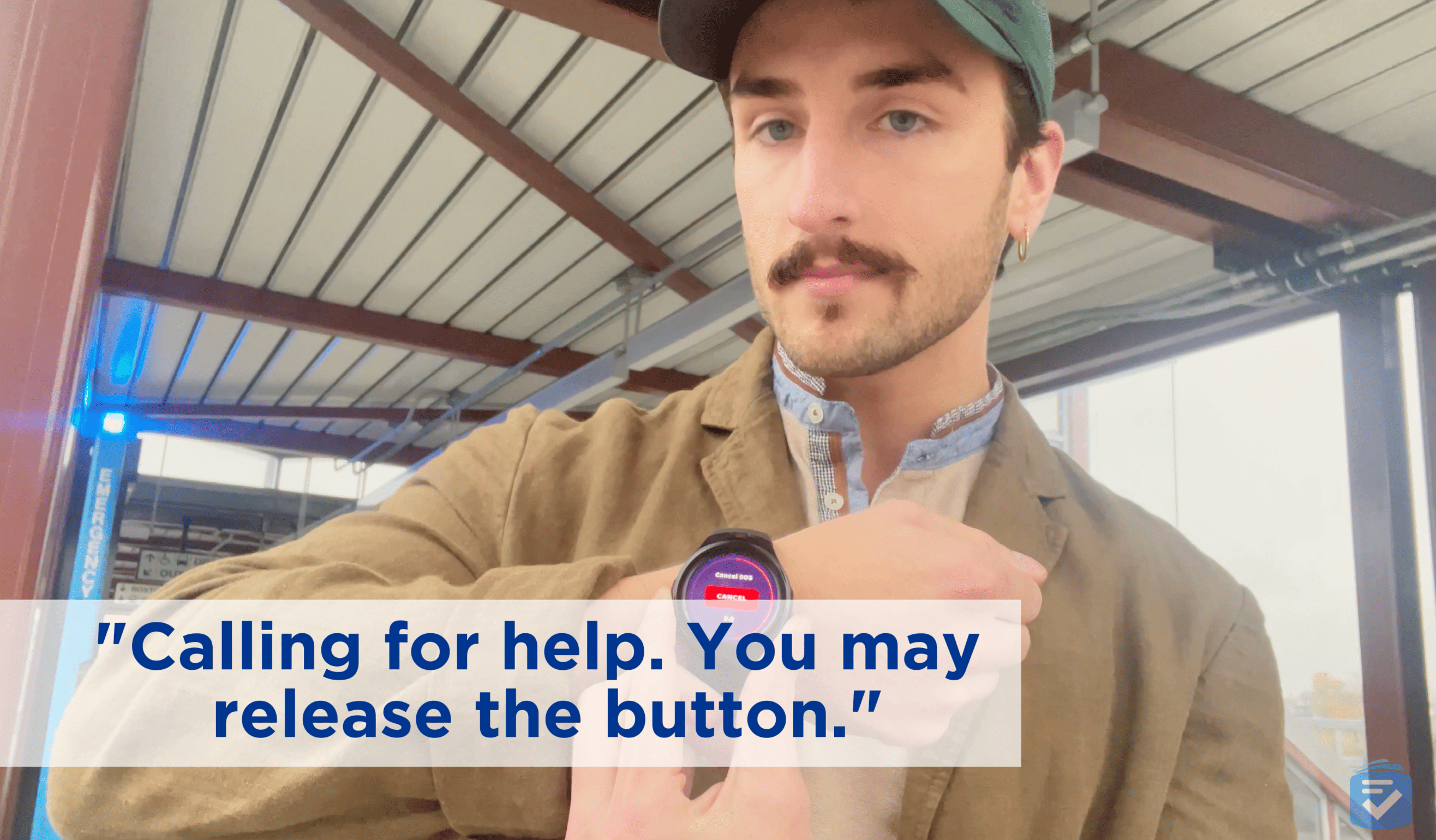
I’m excited to report that in my 10 test calls, my MGMove connected me to a response agent in an average of 10 seconds. That’s the fastest response time of any of the medical alert watches I’ve tested.
Even when I tested the watch outside my home, I found the cellular signal was strong. I’m also happy to report that the Medical Guardian response agents were able to accurately pinpoint my location. For example, when I placed an emergency call at my local train station, the response agent not only reported my street address but also noted the specific train stop.
>> Read More: The Best Medical Alert Watches
I should also note that when I placed each emergency call, my contacts designated in the MyGuardian portal were notified via text message. Again, I was disappointed that this feature costs an extra $2.99 per month.
MGMove Costs
The MGMove device costs $199.95, and monthly subscription fees are $42.95. These fees cover the cost of cellular service on the watch as well as the ability to call the urgent response center. Add-on features will increase your monthly costs. The Support Circle app, which includes reminders and messaging, is $5 per month. The OnGuard Alerts, which notify contacts when you press the emergency button, cost $2.99 per month.
>> Related Reading: ADT Medical Alert Costs in 2025
In short, you’re looking at a minimum up-front cost of $242.90 (the watch, plus a one-month subscription) and recurring monthly payments of $42.95, or more if you want any extra features. Cost-wise, the MGMove is on par with the Bay Alarm Medical SOS Smartwatch, which is $39.95 to $49.95 per month. Even with add-ons, the MGMove is much less expensive than the Kanega Watch, which costs $84.95 a month and includes fall detection.
MGMove Watch Returns and Warranties
You can cancel your monthly subscription any time and receive a prorated refund based on the cancellation date. For example, if you cancel midway through the month, you’ll get a refund of 50 percent of your monthly subscription charge.
>> You might like: The Best Medical Alert Systems for the Blind
With regard to the watch, you have a 14-day window in which you can return it. This means that from the day the watch is delivered, you have 14 days to get it back to Medical Guardian and get your money back, minus a 50 percent restocking fee. After 14 days, they won’t refund the roughly $200 equipment charge.
The MGMove watch comes with a standard 90-day manufacturer’s warranty that covers any defects in materials or workmanship. It doesn’t cover accidental damage. But if you enroll in the MG Protection Plan for an extra $6.99 per month, you can get coverage for accidental damage, normal wear, and even battery replacements.
MGMove vs. SOS Smartwatch
The MGMove and Bay Alarm Medical’s SOS Smartwatch are two of the most popular medical alert smartwatches. While both are water-resistant and give you 24/7 Urgent Response access and optional fall detection, there are some key differences between the two.
One big difference between these devices is battery life: The SOS Smartwatch can hold a charge for six to eight hours, which pales in comparison to the 20-hour battery life we found with the MGMove. And while Bay Alarm Medical offers a 15-day free trial period to test their devices, Medical Guardian does not.
Perhaps most importantly, these watches differ in their emergency response times. In our tests, the MGMove agents responded six seconds faster — 10 seconds compared to the SOS Smartwatch response time of 16 seconds.
Pro Tip: The MGMove works on the AT&T 4G cellular network, so make sure AT&T offers good network coverage in your area, or the watch might be less reliable for you as an emergency alert device.
In terms of pricing, both companies offer monthly discounts if you pay for multiple months in advance. The MGMove smartwatch and SOS Smartwatch each cost around $200.
Although the MGMove costs more per month than the SOS Smartwatch, with or without fall protection, it offers a few more technological bells and whistles compared with the SOS Smartwatch. For example, with the MGMove, you can communicate directly with your caregiver circle via the watch for an extra monthly fee. The SOS Smartwatch lets caregivers track your location, daily step counts, and your device’s battery life but only offers a two-way talk option with emergency agents, not with your care circle.
See the chart below for more side-by-side comparisons.
| MGMove | SOS Smartwatch | |
|---|---|---|
| Device cost | $199.95 | $199 |
| Monthly cost | $42.95 | $39.95 |
| Response times | 10 seconds | 16 seconds |
| Optional fall detection | $10 per month | $10 per month |
| GPS tracking | Yes | Yes |
| Caregiver tracking | Yes | Yes |
Compare Medical Guardian to Other Brands
Bottom Line
As someone who has extensively tested many emergency response devices for seniors, I can confidently say that Medical Guardian’s MGMove is one of the most reliable on the market. It has one of the fastest response rates I’ve tested. Its design is simple, the device is durable; it also worked perfectly even after repeated drop tests and its water-resistant. Its optional fall detection makes it useful for older adults at risk for falls.
However, I didn’t like that Medical Guardian nickel-and-dimes you for some extra features. This includes the text alerts for emergency calls that are included with most medical alert systems. Consequently, the MGMove might not be the cheapest option of a smartwatch with emergency alert capabilities. Still, for older adults who can afford it, it’s a stylish and reliable way to increase your safety and peace of mind.
To learn more about the various systems from Medical Guardian, read our more in-depth Medical Guardian review.
Frequently Asked Questions
-
Is the MGMove waterproof?
The MGMove is rated IP67 water-resistant, which means it can be worn in a shower. However, long-term exposure to water or complete submersion could damage the device.
-
Can fall detection be added?
Yes, fall detection can be added to the MGMove for $10 a month.
-
How does the MGMove compare to a traditional medical alert system?
The MGMove offers more features than a traditional medical alert pendant, including step tracking and messaging capabilities. It also requires daily charging, unlike many traditional systems that can last months on a battery.
-
Is the MGMove suitable for users with cognitive impairments?
The MGMove may be challenging for users with significant cognitive impairments due to its multiple features and touch screen interface. For these users, a simpler medical alert pendant might be more appropriate.
-
How accurate is the GPS location tracking?
The MGMove’s GPS tracking proved highly accurate in our tests, pinpointing locations within 15 feet to 20 feet in most urban and suburban environments. Users in rural areas may experience slightly reduced accuracy.





